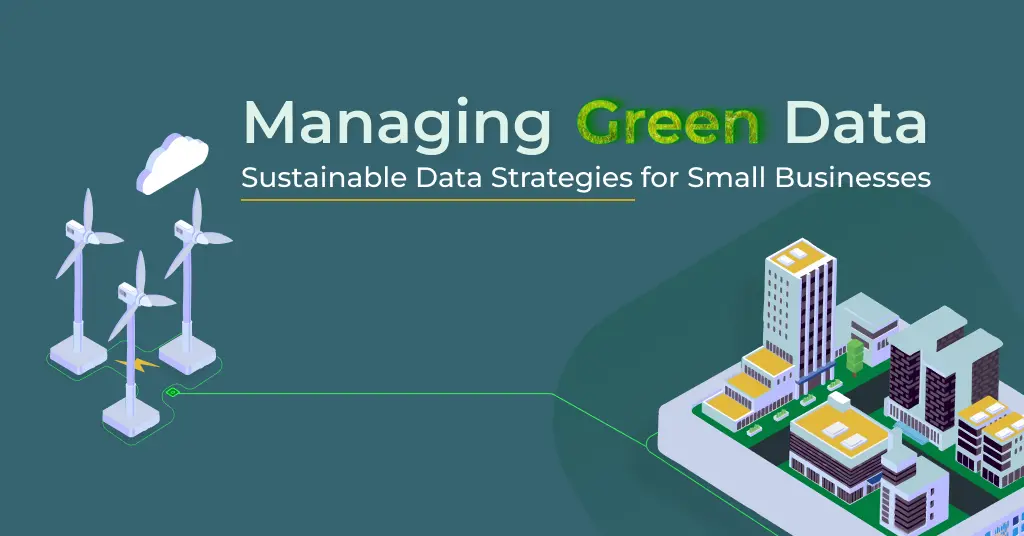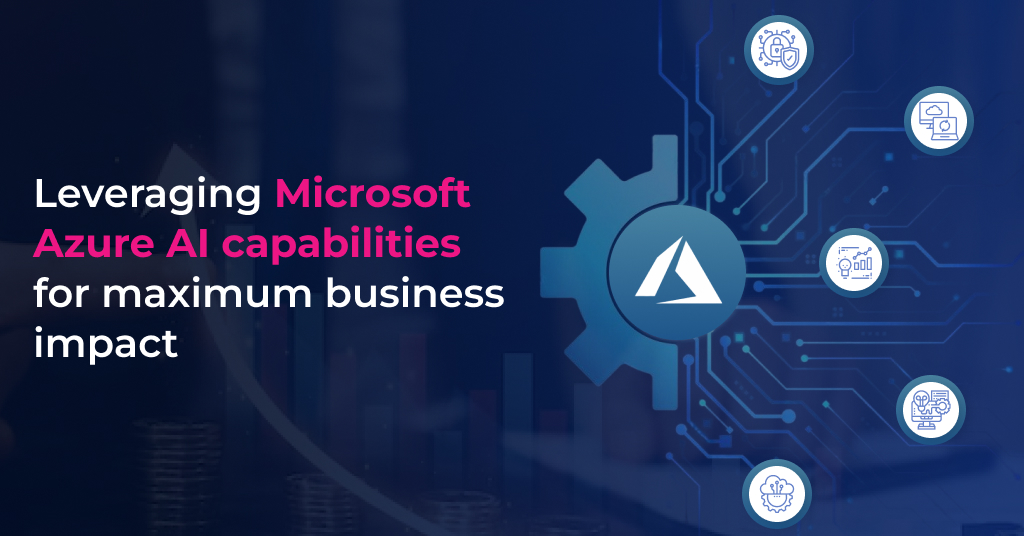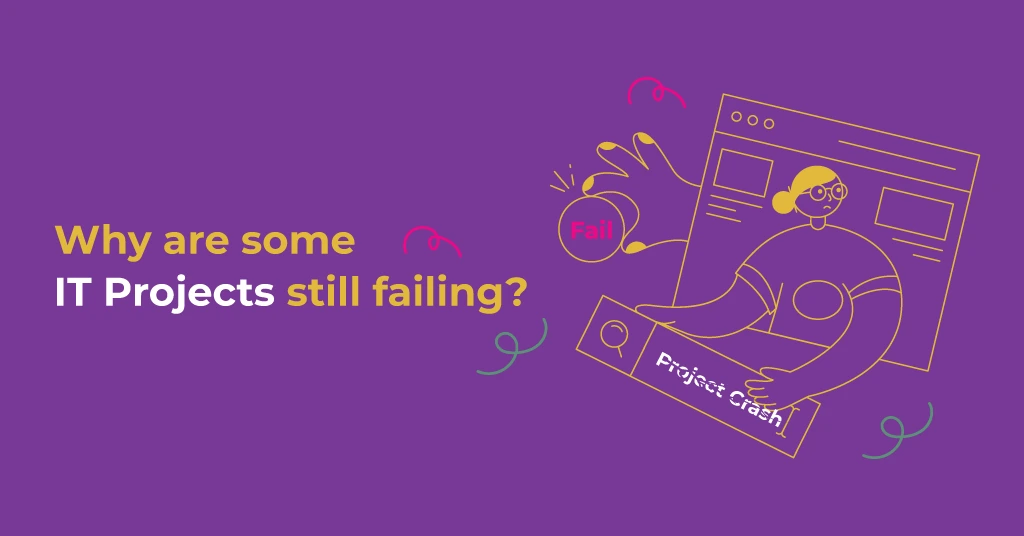Where do we stand in terms of environmental destruction?
We all know the answer – But the real question is
How long are we going to ignore it?
There’s so much written and spoken about it, but unfortunately, we’re still seeing a lot of talk without enough action.
The words are spreading, but the actions are still fragmented…
Stuck in silos, just like data!
When big corporations step up and announce plans to go carbon-neutral by 20XX – What’s your first reaction?
Do you also believe that this is just another corporate bluff?
Honestly, we cannot blame you as there is some truth to it.
We all know how seriously these carbon-neutral terms are taken – especially in the Corporate Settings!
Now, with AI, the promise is – that we’ll reduce so much energy use, and the plan to achieve sustainability might not be too far.
But here’s the catch!
AI and the innovations we’re excited about actually require more energy and it’s contradictory to the whole carbon-neutral narrative!
But what if we tell you that, as an SMB, you actually can reduce your carbon footprint – without needing all the expensive tech and complicated solutions?
What would you say?
We know the general reaction – “If the big companies can’t, how can we even?”
But you can – And this time – we’re not bluffing!!!
How?
Well, let us tell you this –
One of the easiest ways you can make a real difference is by managing your data with Sustainable Data Management Practices.
Data is the biggest, most expensive, and energy-hungry part of technology as it just keeps growing – and growing!
And here’s the thing – you can’t just delete it.
Every bit of data, old or new, is valuable, so losing it isn’t an option.
But managing it efficiently – that’s something you can do.
So, let’s dive in and explore some simple green data strategies that will help you reduce energy consumption.
6 Sustainable Data Management Practices for SMBs to Reduce Carbon Footprint
1. Utilize Green Cloud Services
Moving your data storage and processing to Green Data Centers or Green Cloud Services (Eco-friendly cloud computing solutions designed to reduce energy consumption) is one of the easiest ways to reduce your carbon footprint, without upfront hardware costs.
Many cloud providers have switched to renewable energy sources, ensuring your data is hosted in more eco-friendly environments.
How it’s done –
- Choose cloud providers like Google Cloud, Amazon Web Services (AWS), or Microsoft Azure, which are transitioning to renewable energy.
- Look for small-scale cloud services that can provide transparency about their energy sources at a budget-friendly price.
Tools to Help –
- Google Cloud Sustainability Reports offers insights into how your data is managed using green energy.
- AWS Sustainability can help you track your cloud energy usage and make informed decisions.
2. Use Data Deduplication to Reduce Storage Needs
Data deduplication is a simple, cost-effective way to optimise your data storage and reduce unnecessary energy consumption.
By removing duplicate data, SMBs can store more information without increasing their storage needs or energy requirements.
How it’s done –
- Implement data deduplication in your backup systems to automatically remove redundant data, to reduce storage cost and energy usage.
- Use cloud backup services with built-in deduplication to keep things simple.
Tools to Help –
- Veeam Backup & Replication offers deduplication tools to reduce storage costs.
- Backblaze provides cloud backup with data deduplication options to optimize storage.
3. Data Management and Optimization
Optimizing your data usage is one of the most effective ways to reduce energy consumption.
These tools help you monitor and manage data storage, eliminating inefficiencies and minimising unnecessary resource usage.
SMBs can leverage data management tools and some cost-effective data optimization techniques to streamline their operations and make better decisions about where and how to store data.
How it’s done –
- Use data management tools like Datadog, CloudHealth, or Splunk to monitor your data usage and track inefficiencies.
- Set up automated rules to manage and optimize storage, ensuring you’re only keeping what’s necessary and archiving or deleting old, redundant data.
Tools to Help –
- Splunk helps SMBs monitor data usage, identify patterns, and take action on optimization opportunities to reduce waste and energy usage.
- Datadog, a cloud-based tool that provides real-time monitoring and helps businesses optimize their cloud resources.
- CloudHealth offers a centralized view of your cloud environment, allowing you to track resource consumption and optimize usage for better energy efficiency.
4. Efficiently Manage and Archive Old Data
Old data can accumulate over time, consuming valuable storage resources and contributing to unnecessary energy usage.
Properly managing and archiving this data ensures that your systems remain efficient, and you reduce your carbon footprint by only storing what’s necessary.
How it’s done –
- Implement a Data Retention Policy that defines how long different types of data should be stored and when it should be archived or deleted.
- Use automated tools to categorize data and move it to the appropriate storage tier, such as archiving older files to lower-cost, energy-efficient storage options.
- Ensure that only critical data is retained in active storage, while less important data can be archived or deleted after a set period.
Tools to Help –
- Veritas NetBackup is a robust tool for managing and archiving old data, with features that automate data classification and tiered storage to optimize energy consumption.
- Commvault is a data management tool for SMBs to organize, archive, and delete data based on its importance and usage frequency, helping to reduce unnecessary storage costs and energy consumption.
5. Implement Energy-Efficient Storage Solutions
Even without the latest cutting-edge hardware, SMBs can make a big impact by choosing energy-efficient storage solutions that consume less power.
Focus on solid-state drives (SSDs) and energy-efficient cloud services that are optimized for lower energy use.
How it’s done –
- If using on-premises storage, consider replacing traditional hard drives with SSDs, which are more energy-efficient.
- Choose cloud storage options that offer energy-efficient hosting with lower power consumption.
Tools to Help –
- Google Drive for Business is powered by energy-efficient data centres, providing eco-friendly cloud storage.
- Backblaze can be used as it offers affordable cloud storage with energy-conscious practices.
6. Actively Monitor and Optimize Energy Consumption in Data Centers
Even if you’re using cloud services, it’s still important to track energy consumption.
Understanding how your data operations consume energy allows you to make adjustments that reduce waste.
How it’s done –
- Use cloud monitoring tools to track and optimize your data usage.
- Regularly audit your cloud service usage to ensure you’re not wasting resources on unnecessary services.
Tools to Help –
- AWS CloudWatch can help you monitor energy consumption and operational efficiency in your cloud environment.
- Google Cloud Operations Suite can also help you track your cloud infrastructure and optimize resource use.
These are just some of the top options you have!
Other than that – you can discuss it with your team and ask them what you all can do collectively that can help mitigate most that sometimes goes missing!
Because…
Going Green Doesn’t Have to Be Expensive...
As an SMB, you don’t need to overhaul your entire infrastructure or spend a fortune to adopt Sustainable Data Management Practices.
The key is starting with small, practical steps that reduce energy consumption, limit waste, and lower your carbon footprint.
By utilizing green cloud services, renewable energy data centres, and implementing energy-efficient storage options you can make a big impact on the environment—without breaking the bank.
The tools and strategies we’ve outlined are budget-friendly and scalable, making it easy for even small businesses to take action.
If they are something that you have been using – it’s Great!
But if not – then you need to start thinking about it!
As, they are not just a step towards a better and more sustainable future but if you look closely – these Green Data practices can help you save a lot in the long term!
All you need to do is…
Start small, track your progress, and scale up your sustainability initiatives over time.
Every little change you make can help your business save money, stay competitive, and contribute to a greener planet.
Just like you, we care about the impact we make!
Every day, we take small steps that add up.
One of which was our initiative on Earth Day 2024, we made a small effort that had a big impact on our team members’ life at Covrize.
Read about our Earth Day 2024 Celebration – A 45-day plant journey from Earth Day to Environment Day!







